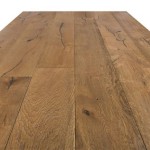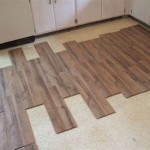Essential Aspects of Underlayment for Bamboo Flooring
When installing bamboo flooring, the underlayment plays a crucial role in enhancing its longevity, performance, and comfort. Here are some key aspects to consider when selecting and installing an underlayment for bamboo flooring:
Material and Density
Underlayment materials can range from polyethylene foam to cork or rubber. Each material offers different properties, such as moisture resistance, sound insulation, and thermal insulation. Determine the specific requirements of your flooring and space to choose an appropriate material. The density of the underlayment also affects its performance. A higher-density underlayment provides better sound absorption and support.
Moisture Resistance
Bamboo flooring is susceptible to moisture damage, so choosing an underlayment with high moisture resistance is essential. Vapor barriers, such as polyethylene or plastic sheeting, can be installed beneath the underlayment to create a moisture barrier and prevent water vapor from reaching the flooring.
Sound Insulation
Underlayment can significantly reduce noise levels by absorbing sound and vibrations. Look for underlayments specifically designed for sound insulation, which can improve acoustic comfort in your space.
Thermal Insulation
An underlayment can provide additional thermal insulation, helping to regulate temperatures and improve energy efficiency. Choose an underlayment with thermal insulation properties if you're concerned about maintaining a comfortable temperature in your home.
Compatibility
Ensure compatibility between the underlayment and bamboo flooring. Some underlayments may not be suitable for certain types of bamboo flooring or installation methods. Consult with the bamboo flooring manufacturer or a flooring professional to determine the most compatible underlayment.
Installation
Proper installation of the underlayment is crucial for optimal performance. Lay the underlayment smoothly and evenly across the subfloor, ensuring no air gaps or wrinkles. Secure the underlayment according to the manufacturer's instructions, using tape, staples, or adhesive.
Cushioning and Support
Underlayment provides cushioning and support for bamboo flooring, increasing its durability and walking comfort. A well-cushioned underlayment can help reduce stress on the flooring and make it more comfortable to walk on.
Additional Considerations
Other factors to consider when selecting an underlayment for bamboo flooring include: thickness, environmental friendliness, and budget. Choose a thickness that provides adequate sound and thermal insulation without interfering with the flooring's height. Opt for environmentally friendly materials if sustainability is a concern. Finally, determine a budget for the underlayment and select an option that meets both your performance and financial requirements.
Conclusion
Selecting and installing an appropriate underlayment is essential for maximizing the performance, longevity, and comfort of bamboo flooring. By considering the material, density, moisture resistance, sound insulation, thermal insulation, compatibility, installation, cushioning, and additional factors discussed in this article, you can make an informed decision that ensures a successful bamboo flooring installation.

Bamboo Flooring Underlayment And Adhesive Non Toxic Effective Green Building Supply

Silver Bam Underlay Sold Per M² The Bamboo Flooring Company

Underlayment For Bamboo Flooring Mp Global S Llc

Quick Guide To Underlay For Bamboo Floors The Flooring Company

Best Underlayment For Bamboo Flooring

How To Install Bamboo Flooring Floated Diy Method

Floating Floor Underlayment Tesoro Woods

Bamboo Flooring Underlayment An Overview Hunker

Quick Guide To Underlay For Bamboo Floors The Flooring Company

Floating Floor Underlayment Tesoro Woods
Related Posts








